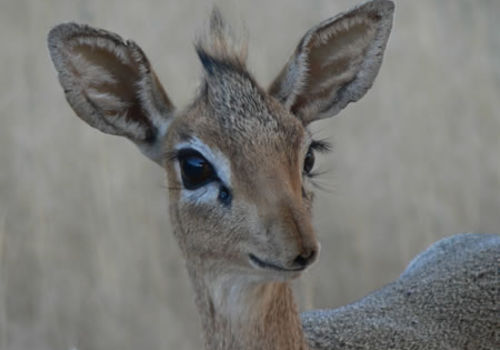
Damara dik dik
Madoqua kirkiiDamara dik dik
Introduction: The Damara dik-dik (Madoqua kirkii) is one of Africa's smallest antelopes and a protected species in Namibia. Although they are regularly seen alone, they mate for long periods, probably for life. They are very territorial and should competition be too stiff, will move on to a new territory. Among the characteristics of the Damara dik-dik, is their proboscis nose, that can be moved in any direction to scent for specific food sources. Their hooves have well-developed black rubbery pads that act as a shock absorbers when their feet strike the hard ground, a feature of the terrain they habit, mainly dense woodland and thick scrub.
Distribution: Despite their name, they are not found in the Damaraland region of Namibia, but are found at Waterberg, Okonjima, Etosha National Park, Zambezi Region (formerly the Caprivi Strip) and as far south as Brukkaros Mountain.
Diet: The Damara dik-dik are predominately browsers and because they are so small, they need to eat the most nutritious part of a plant. They graze on leaves, pods, flowers and occasionally sprouting grass. Although they are independent of drinking water, they will drink from puddles when it is available.
Colouring: The upper parts of the body are yellowish-grey in colour while neck, shoulders and sides are browner. The chest and underparts are light compared to the rest of the body.
Breeding: The mother gives birth to one young a year after a gestation period of 6 months. This coincides with the rainy season between December to April, which gives nursing mothers the advantage of plentiful food.
Size: The shoulder height is an average of 40cm, with a weight of 5kg. Only the males carry the spike-like horns.
Klein Windhoek

